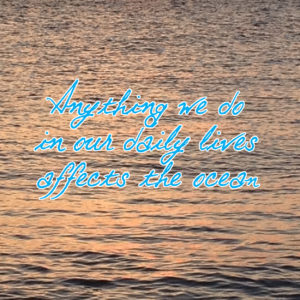This just in! Another fine addition to The Majestic Plastic Bag conservation series. A reusable plastic bag company, ChicoBag Company, announced recently that they are being sued by three of the nation’s largest disposable plastic bag manufacturers. Those companies are claiming that a link on the ChicoBag Company website educating citizens about the long term implications of disposable plastic bags to the environment is causing “irreparably harmed” their business.
Some of the statements that the disposable plastic bag companies have issue with are:
- “A reusable bag needs only to be used eleven times to have a lower environmental impact than using eleven disposable bags.” Source: EPA
- “Only one percent of plastic bags are recycled.” Source: EPA
- “Somewhere between 500 billion and a trillion plastic bags are consumed worldwide each year.” Source: National Geographic
- “The world’s largest landfill can be found floating between Hawaii and San Francisco. Wind and sea currents carry marine debris from all over the world to what is now known as the Great Pacific Garbage Patch. This ‘landfill’ is estimated to be twice the size of Texas and thousands of pounds of our discarded trash, mostly plastics.” Source: National Geographic
- “Each year hundreds of thousands of sea birds and marine life die from ingestible plastics mistaken for food.” Source: L.A. Times
We’ll keep you updated on how this plays out via our Twitter feed.
Related articles
- The Majestic Plastic Bag – Part II (beachchairscientist.wordpress.com)
- The Majestic Plastic Bag – Part III (beachchairscientist.wordpress.com)
- Reusable Shopping Bags: Making the Switch (everydayhealth.com)
- Plastic Bags: Just Say “No” (greenwithoutgreen.wordpress.com)
- A Worldwide Survey of Plastic Bag Bans & Waste (Infographic) (treehugger.com)



 I am a volunteer for the Illinois Ocean Coalition. This is a new position for me – as my family and I recently relocated from the Washington, D.C. area to the Chicagoland area. One question I get a lot now is “You know there isn’t an ocean in Illinois, right?” As a biology and earth science teacher, I am very much aware of this. But, my role is to lead an Illinois chapter of the Inland Ocean Coalition. The Inland Ocean Coalition is based in Boulder, CO and acts as the parent organization for local Ocean Coalition chapters all around the country. Each chapter works to engage citizens in land-to-sea stewardship projects because the ocean is vital for all our lives, no matter where we live – even inland in Illinois.
I am a volunteer for the Illinois Ocean Coalition. This is a new position for me – as my family and I recently relocated from the Washington, D.C. area to the Chicagoland area. One question I get a lot now is “You know there isn’t an ocean in Illinois, right?” As a biology and earth science teacher, I am very much aware of this. But, my role is to lead an Illinois chapter of the Inland Ocean Coalition. The Inland Ocean Coalition is based in Boulder, CO and acts as the parent organization for local Ocean Coalition chapters all around the country. Each chapter works to engage citizens in land-to-sea stewardship projects because the ocean is vital for all our lives, no matter where we live – even inland in Illinois.
 The ocean is responsible for so much greatness on the planet because it is such a great part of our planet. You might remember from high school physics that energy is neither created nor destroyed — in a closed system. Earth – as a whole – is a “closed system”. The earth as a closed system only allows energy (i.e., from the sun) across boundaries. The ocean, on the other hand, is an “open system”. Open systems allow energy and mass to pass across boundaries (e.g., where do you think the salt comes from? The erosion of rocks brings salt and is an example of this “open system” mechanism). Anything we do in our daily lives affects the ocean and creates a less habitable and tolerable “closed system” of earth.
The ocean is responsible for so much greatness on the planet because it is such a great part of our planet. You might remember from high school physics that energy is neither created nor destroyed — in a closed system. Earth – as a whole – is a “closed system”. The earth as a closed system only allows energy (i.e., from the sun) across boundaries. The ocean, on the other hand, is an “open system”. Open systems allow energy and mass to pass across boundaries (e.g., where do you think the salt comes from? The erosion of rocks brings salt and is an example of this “open system” mechanism). Anything we do in our daily lives affects the ocean and creates a less habitable and tolerable “closed system” of earth.







What people are saying …